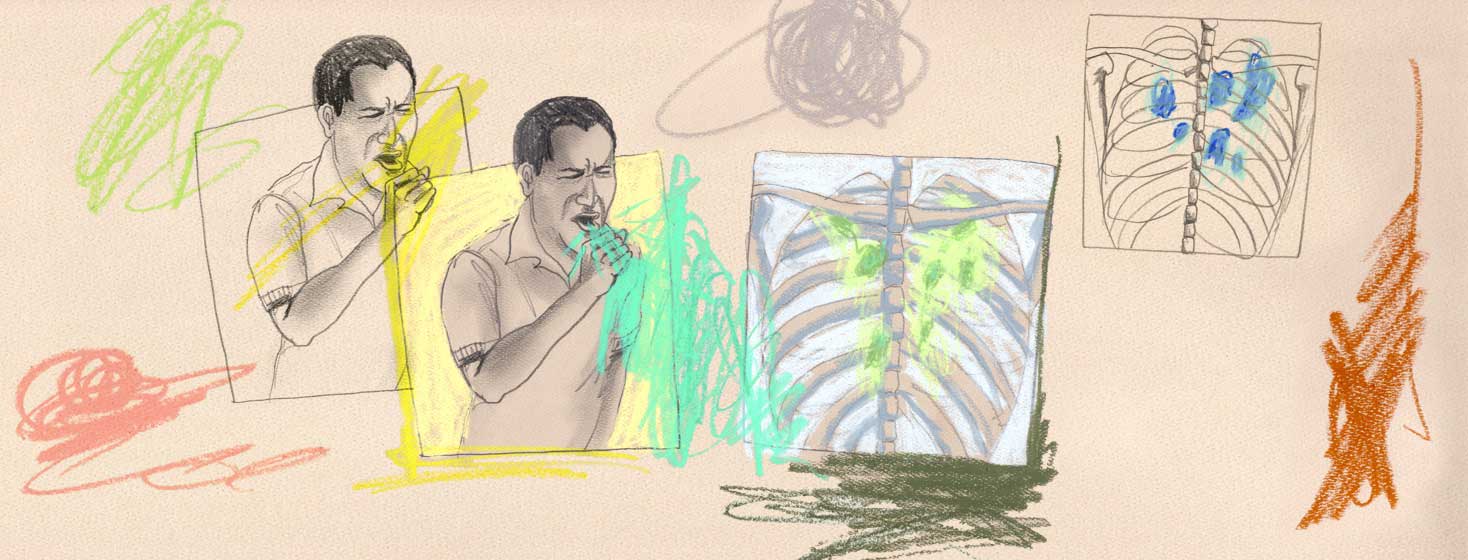What is Sarcoidosis?
Fatigue, shortness of breath, persistent dry cough, chest tightness, and wheezing are the symptoms. Sound familiar? These are the symptoms of COPD, though they are also common symptoms of a medical condition called sarcoidosis. So, what is sarcoidosis? Here’s what to know.1-2
What is sarcoidosis?
It’s a disease where inflammatory cells (called macrophages) gather together in clumps or nodules. These clumps of cells are called granulomas. They may join together and impede the function of the infected organ. They can form in pretty much any part of your body. They can affect your lymph nodes, eyes, brain, heart, skin, nerves, bone, joints, muscles, lungs, etc.1-3
How does sarcoidosis develop?
The cause of sarcoidosis remains a mystery. It is suspected that granulomas only develop in people with a genetic predisposition. This means that they probably only develop in people who have certain yet to be identified genes. Yet these genes remain inactive until they are exposed to certain environmental irritants.2-5
These environmental irritants may include viruses, bacteria, or chemicals. Exposure is these irritants are thought to be harmless to most people. But in those with a genetic predisposition, they trigger an abnormal immune response. This causes the affected organs to recruit these inflammatory cells. They collect together to form the granulomas.2-5
The intent of this immune response is noble: it’s to trap and remove the irritant from the infected organ. But, the response is exaggerated in these patients, resulting in granulomas. When sarcoidosis affects anything other than the lungs, it’s called extrapulmonary sarcoidosis. When sarcoidosis affects the lungs it is called pulmonary sarcoidosis. About 90% of those diagnosed with sarcoidosis also have pulmonary sarcoidosis.2
The remainder of this article will be about pulmonary sarcoidosis. This is the type of sarcoidosis that may mimic COPD symptoms.
Who does sarcoidosis affect?
Like COPD, it is usually not diagnosed until later in life. The average age of diagnosis is between the ages of 35 and 50. It is generally considered a rare disease that effects females slightly more than males. It effects all ethnic groups.2
- 17-35 of every 100,000 African Americans
- 5-12 of every 100,000 Caucasian
- 1-3 of every 100,000 Asians or Hispanics
There are four stages of pulmonary sarcoidosis. Half of those diagnosed are in the early stages, or stages 1-2. Most of these patients experience no symptoms and require no treatment. The disease progressive very slowly, so the prognosis for those in stages 1-3 is very good.2
Those most likely to experience respiratory symptoms are in stages 3-4. These are the patients who would most benefit from treatment. For most people, the prognosis is good, as symptoms go away over time. Some (or about 10%) may experience chronic pulmonary sarcoidosis. These patients may experience occasional flare-ups that require treatment.1-2,4
How is sarcoidosis diagnosed and treated?
It’s a relatively newly defined disease. It’s also rare. Plus, most patients experience no symptoms in the early stages. For these and other reasons it often goes undiagnosed. Whey symptoms are experienced, they often mimic symptoms of other diseases, like ours. So, it’s not uncommon for sarcoidosis to be misdiagnosed.1-2
There is no one specific test for diagnosing it either, which further complicates things. So, various tests are necessary, such as x-ray, CT, MRI, EKG, biopsy, blood tests, urine tests, and pulmonary function testing (PFT). These tests can help rule out other diseases. They can help confirm a diagnosis of sarcoidosis (extrapulmonary or pulmonary).
For some people experiencing symptoms, they may go away on their own over time. However, others may require treatment. Some options for sarcoidosis include:1-2
- Oral corticosteroids: they reduce inflammation
- Methotrexate: it helps reduce the immune response
- Biologics like infliximab and adalimumab: they suppress the immune response.
- Other: depending on patient or physician preference.
There are also non-medicinal treatments that may help as well. For example, pulmonary rehabilitation is known to benefit the COPD population. In much the same way, it may prove helpful for those with symptomatic or chronic pulmonary sarcoidosis.
Key takeaways
Sarcoidosis is a rare disease that usually affects the lungs. Most who have it experience no symptoms, and it often goes undiagnosed or misdiagnosed. Less than half of those diagnosed experience symptoms. These symptoms usually go away on their own or with treatment.
Community Poll
Do you have an exercise routine?

Join the conversation